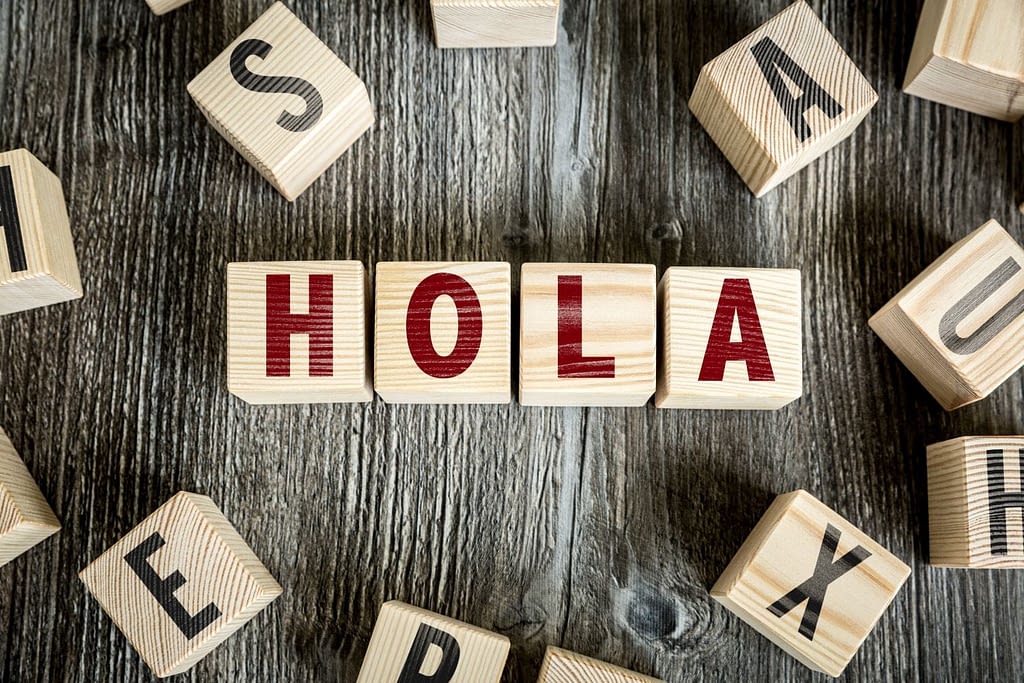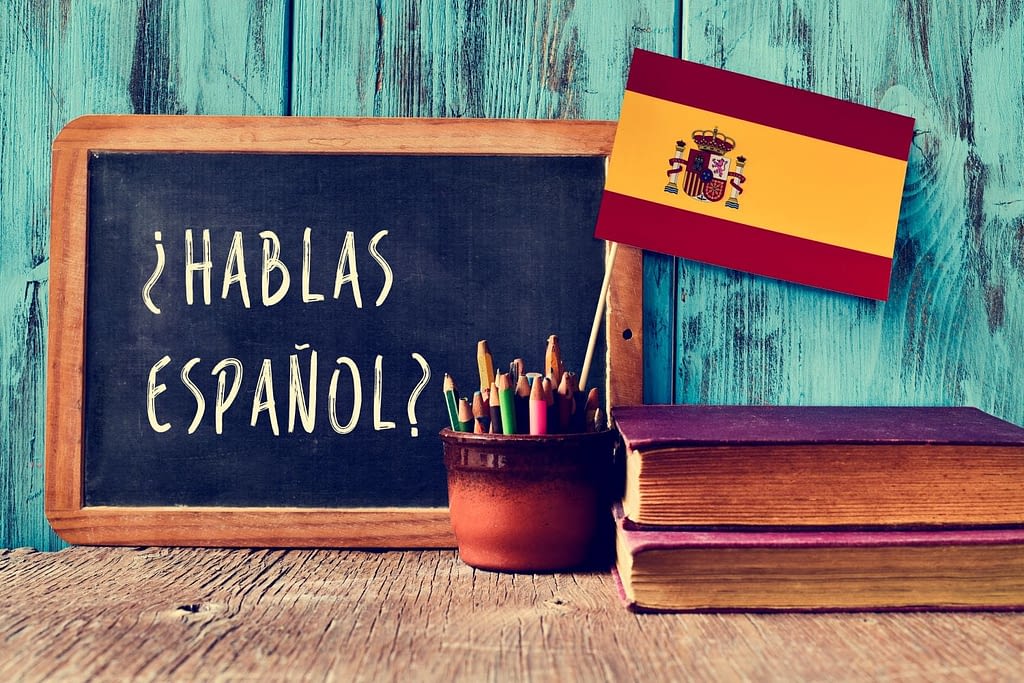The Best Ways To Learn Spanish
Moving to Spain can be a dream come true. The Mediterranean climate, beautiful landscapes, rich culture, and laid-back lifestyle make it one of the most sought-after destinations for relocation. However, settling into a new country comes with challenges, and language is often the most significant. Learning Spanish isn’t just a handy skill in Spain. It’s a fundamental part of integrating and fully experiencing life here. Whether you plan to move to Mallorca, Andalusia, or anywhere in between, mastering the language will open doors you might not have imagined.
In this article, we’ll explore why learning Spanish is so crucial for expats, how it helps you integrate into Spanish society, and the best approach to learning with some recomendations from my own learning journey.
Why Learning Spanish is Essential
Day-to-Day Functionality
Upon arrival in Spain, one of the first challenges is navigating everyday situations, from grocery shopping to understanding utility bills, booking doctor’s appointments, or simply asking for directions. While many locals in tourist hotspots speak English, relying solely on this is very limiting, especially in more rural areas or for tasks that require deeper communication. Knowing basic Spanish phrases helps with practical tasks and avoids frustration in daily life.
Cultural Integration
Learning the language allows you to become part of the local culture. Spanish isn’t just a means of communication—it’s a gateway to understanding how people live, think, and express themselves. Speaking the language allows you to participate in local festivals, start conversations with neighbours, and gain deeper insights into the Mediterranean way of life. Over time, you’ll find that knowing Spanish helps you live in Spain and feel at home.
Building Relationships
When you can speak in Spanish, you’re more likely to form meaningful connections with locals. It shows respect and an investment in the community, which can lead to warmer relationships and lasting friendships. Speaking Spanish fosters connections, whether making friends at the local café or communicating with your children’s teachers. Even if you still talk with an accent or make mistakes, most people will appreciate the effort.
Navigating Bureaucracy
Spain’s bureaucratic processes can be tricky to navigate and are almost always conducted in Spanish. If you’re dealing with residency permits, opening a bank account, or handling legal documents, you will likely need to communicate in Spanish or, at the very least, have a basic understanding. While you can hire translators, knowing Spanish gives you more control over these interactions.
Techniques for Fast and Effective Learning
1. Focus on the Most Used Words
One of the most efficient ways to start learning any language is by focusing on the most frequently used words and phrases. In Spanish, as in any language, a small percentage of the words are used repeatedly in everyday conversation. Studies show that learning the top 1,000 most common words can cover around 80% of everyday speech.
- How to do it: Start by memorizing basic verbs (like tener – to have, ser – to be, hacer – to do), nouns (like casa – house, gente – people, comida – food), and key phrases you’ll use regularly (like ¿cómo estás? – how are you?, me gusta – I like). Focus on the essentials first to help you manage daily interactions quickly.
- Tools for learning vocabulary: Apps like Memrise and Anki are great for drilling these words. They use spaced repetition to help you retain the words long-term, meaning you’ll review new vocabulary at increasing intervals until it sticks.
2. Learn Pronunciation Early
Many language learners overlook pronunciation, but mastering it early can save you a lot of trouble down the road. The Spanish alphabet is largely phonetic, meaning words are pronounced as they are written. Focus on getting the basics of pronunciation right from the start—especially tricky sounds like r (rolled r), j (which sounds like a guttural “h”), and the distinct difference between the “b” and “v” sounds in Spanish.
- Techniques: Listen closely to native speakers, mimic their pronunciation, and use resources like Forvo (a site with audio pronunciations from native speakers). Practicing out loud is key to building confidence.
- Shadowing: This technique involves listening to native speech and repeating it as closely as possible. You can use audio clips or watch Spanish YouTube videos, repeating after the speakers.

3. Master Basic Grammar and Sentence Structures
While vocabulary is essential, knowing how to construct basic sentences will make a huge difference in your communication ability. Focus on learning basic grammar rules early on, such as changing verbs to the present tense, structuring questions, and using gender (masculine/feminine) and plural forms.
- Start simple: Don’t worry about mastering all the verb tenses simultaneously. Begin with the present tense, as it is used most frequently. You can also focus on learning a few key past and future tenses as you progress.
- Useful tools: Grammar Hero and SpanishDict offer explanations and exercises tailored to specific levels, so you can build a strong grammatical foundation while avoiding overwhelm.
4. Use Mnemonics to Remember Vocabulary
Mnemonics are memory aids that help you recall information more easily by associating it with an image, story, or sound. This method can be especially useful for difficult or unfamiliar words. For example, to remember the word mesa (table), you might visualize a giant “mess” on a table, making the association vivid and easy to recall.
5. Practice Speaking from Day One
Many learners, including myself, hesitate to speak Spanish until they feel “ready,” but the sooner you practice, the quicker you’ll improve. Even if you know only a handful of phrases, use them in real conversations.
- Language exchange: Language exchange platforms like Tandem, HelloTalk, or ConversationExchange allow you to practice speaking with native speakers. They can also correct your mistakes in real time, making it a valuable way to practice conversational Spanish.
- Self-talk: Speak to yourself in Spanish throughout the day, whether narrating your actions, trying to recall phrases from memory, or simply thinking of how you would say certain things in Spanish. This will help you internalize the language and become comfortable with speaking.
6. Chunking: Learn Phrases Instead of Isolated Words
Rather than just memorizing individual words, try to learn in “chunks” or phrases commonly used together. This approach helps you grasp the natural rhythm of the language and makes it easier to string together full sentences when you speak.
- Examples: Phrases like ¿Qué tal? (How’s it going?), No pasa nada (No worries), or ¿Me puedes ayudar? (Can you help me?) are useful chunks that will help you navigate everyday situations.

7. Consistency with Short, Daily Sessions
Consistency beats intensity when it comes to language learning. Instead of spending hours studying irregularly, aim for 15–30 minutes of Spanish practice daily. Short, regular sessions help your brain retain information better and build language skills faster. The Anki app, with its flashcard approach, is perfect for this. I can pick it up throughout the day whenever I have a few minutes spare, rather than needing to carve out huge blocks of time.
8. Listening to Spanish Music and Podcasts
Listening to authentic Spanish content is a fun and natural way to get used to how the language sounds. Music, podcasts, and audiobooks expose you to different accents, speeds of speech, and expressions.
- Spanish podcasts: For beginners, podcasts like Coffee Break Spanish or Notes in Spanish provide simple explanations and dialogues, allowing you to follow along without feeling lost. For more advanced learners, try native Spanish podcasts like Radio Ambulante or Hoy en el Mundo to improve listening comprehension.
- Music: Listening to Spanish music can help with pronunciation and vocabulary. Choose songs that you enjoy and try translating the lyrics, or just sing along. It makes language learning fun and interactive.
9. Use Real-Life Situations as Learning Moments
Every interaction is a potential language lesson if you’re already living in Spain. Treat your grocery shopping, doctor visits, or chats with neighbours as practice sessions. The experience will teach you more than any textbook, even if you make mistakes.
- Journaling in Spanish: Keep a daily journal in Spanish to track your experiences in the language. Start with simple sentences and phrases, and gradually try more complex thoughts. This will help solidify what you’ve learned while giving you a sense of progress.
10. Sign up for an Online Language Course
Online courses are incredibly flexible, allowing you to learn at your own pace. However, choose carefully, as many take the traditional structured approach to language learning, and before you know it, you will feel defeated by grammar and want to give up. There are many popular online resources, such as Duolingo or Busuu, but I haven’t found these to be very effective. Having tried many different methods over the years, I personally feel like what I learned on apps like these didn’t help me in the real world and left me confused with grammar and unable to string a simple sentence together as many language courses do.
I highly recommend James Spanish School. This online learning program allows you to work at your own pace, following the pre-recorded lessons. The primary teaching method is through videos, including tests and listening exercises. I enjoyed James Spanish School because it cuts out the technical jargon and unnecessary terminology. James also has an entertaining approach to the lessons to keep you interested, with some great tips to help you remember key rules and covers cultural differences. The lessons can be revisited as many times as you like, and it is a lifetime subscription. Lessons start from €55
I can also highly recommend Gone Speaking as a great online learning program with the advantage of group online conversational practice. This modern alternative language school uses Anki’s flashcard app combined with individual and group Zoom calls to help build conversational and listening skills as well as much-needed confidence. Gone Speaking eliminates the over-complicated approach to grammar and focuses on the most used words and phrases. It breaks the teaching down into simple and understandable bite-size pieces, with the advice to spend 20 minutes daily learning the flash cards. I found this technique really effective and managed to unlock my historical grammar confusion in the 20-day program. Lessons start from €29.
Summary
By blending these techniques—focusing on high-frequency words, practicing pronunciation, using language in daily life, and keeping learning sessions short but regular—you’ll see steady progress in your Spanish skills. Look into signing up to a modern online Spanish course to accelerate your learning. The key is to keep it practical, enjoyable, and consistent. With time and dedication, you’ll find yourself navigating Spain with ease and engaging more deeply with its vibrant Mediterranean lifestyle.







